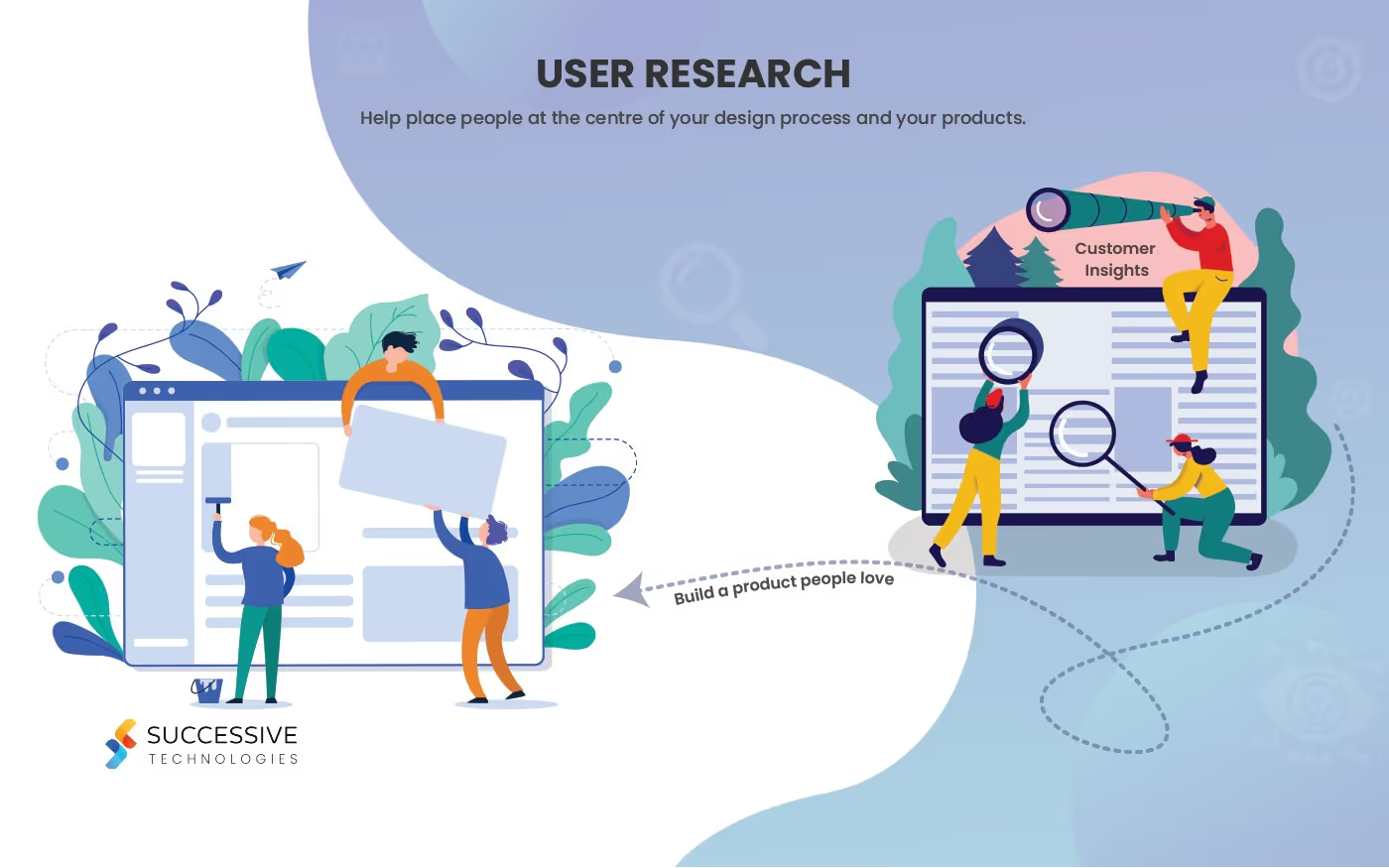User Research, the term brings to mind a complex looking image with stacks of paper, graphs and diagrams, computers, figures, and whatnot. If this is true for you too, then you are not wrong. It does in-fact consist of an infinitely straining series of events, each more complex than the other.
Then why do so many companies today invest so much in terms of money and manpower in setting up programs all based on one objective- user research?
The answer to this question is simple — it is impossible to launch a successful product or design without going through this tedious process, for it is nothing but this that gives the creators an idea of what the audience wants, how will it perceive whatever they have to offer and most importantly how much are they willing to pay in order to have it. It seems like a fair bargain, doesn’t it?
So let us begin by understanding what is this “user research”. If very loosely defined, it can be considered as observation techniques, task analyses and other methods of feedback aimed to procure an understanding of the user’s needs, problems, and behavior. It is carried out using various methodologies, both quantitative and qualitative and over the years has evolved into a near scientific method of analysis.
User research can be considered as an exploration mission sent right to the hearts of consumers. These become essential because every UX or UI designer needs the data provided by this to be empathetic towards the user’s needs. Many experts in the field unanimously stress on the need for empathy in design. They opine that without understanding the feelings, sight, and experience of others it is pointless to design anything. This makes perfect sense, after all, UX or user experience is all about satisfying the user, making him comfortable while using that given piece of technology and that can only happen once you know what makes that consumer happy, what makes him twitch, what annoys him and what relaxes him, User research gives you all of these things and more.
User research brings in data through ethnographic studies, usability tests, interviews, surveys, statistical analyses and serves it to the designer, it provides him a window to the user’s mind and finally gives him an inspiration so as to “what to create.” The first and foremost outcome is exactly that, it provides the designers with inspiration and paints them a clear picture of whether their idea is relevant or not. This goes a long way. The data and its analysis are used to demonstrate to the companies the importance of these designs and to attract investors, capital, and everything else that the designer needs to carry on. It even guides these big companies in the direction they should invest more in R&D. A classic example of the fact is Samsung TV. Before their embankment in the journey of user research, the global TV market was dominated by ostentatious boasting of their screen’s resolution, sound quality, etc. But Samsung’s research sung a different tale, it indicated that the audience cared much more about the looks and overall design of their television as compared to the technical feats it offered.
People thought of the TV more like a piece of furniture than anything else and wanted it to fit in inside their rooms along with other things and not glare around looking out of place. As a result, Samsung radically altered its designs and the televisions they produced were sleeker, better looking, and capable of merging in with its surroundings. Samsung’s share of the global TV market nearly doubled because of this endeavor. This and many more examples including those of Microsoft, Sony, Lenovo all giants in their respective fields had an epiphany that changed their profit sacks allowing their advancements in the field of User Research.
Another bright spot that this field highlights along with return on investment, relevance, etc. is in the arena of sales and advertisement. Advertising a product without knowing the user is the same as shooting an arrow in the dark and hoping it hits the bull’s eye. User research describes the demographics of the consumer in a way that enables the sellers to isolate the needs, necessities, likes, dislikes of a large number of consumers, and finally isolate their own target customer. The 21stCentury is scattered with examples of companies providing fewer benefits to the consumer as compared to a rival company and yet showing more in sales. All of this hinges upon one thing- understanding the user, and accomplishing that is next to impossible without a good quality, comprehensive user research.
Thus, on the importance of user research, we may simply conclude that, for a designer to get inspiration for a product he needs user research, for a company to understand the return on investment and the relevance of a product it needs user research and finally for a seller to fix the price and finally sell the product he needs user research. Every step of the journey a lot of things change, but what remains constant is the need for quality user research.
.avif)










.jpg)









